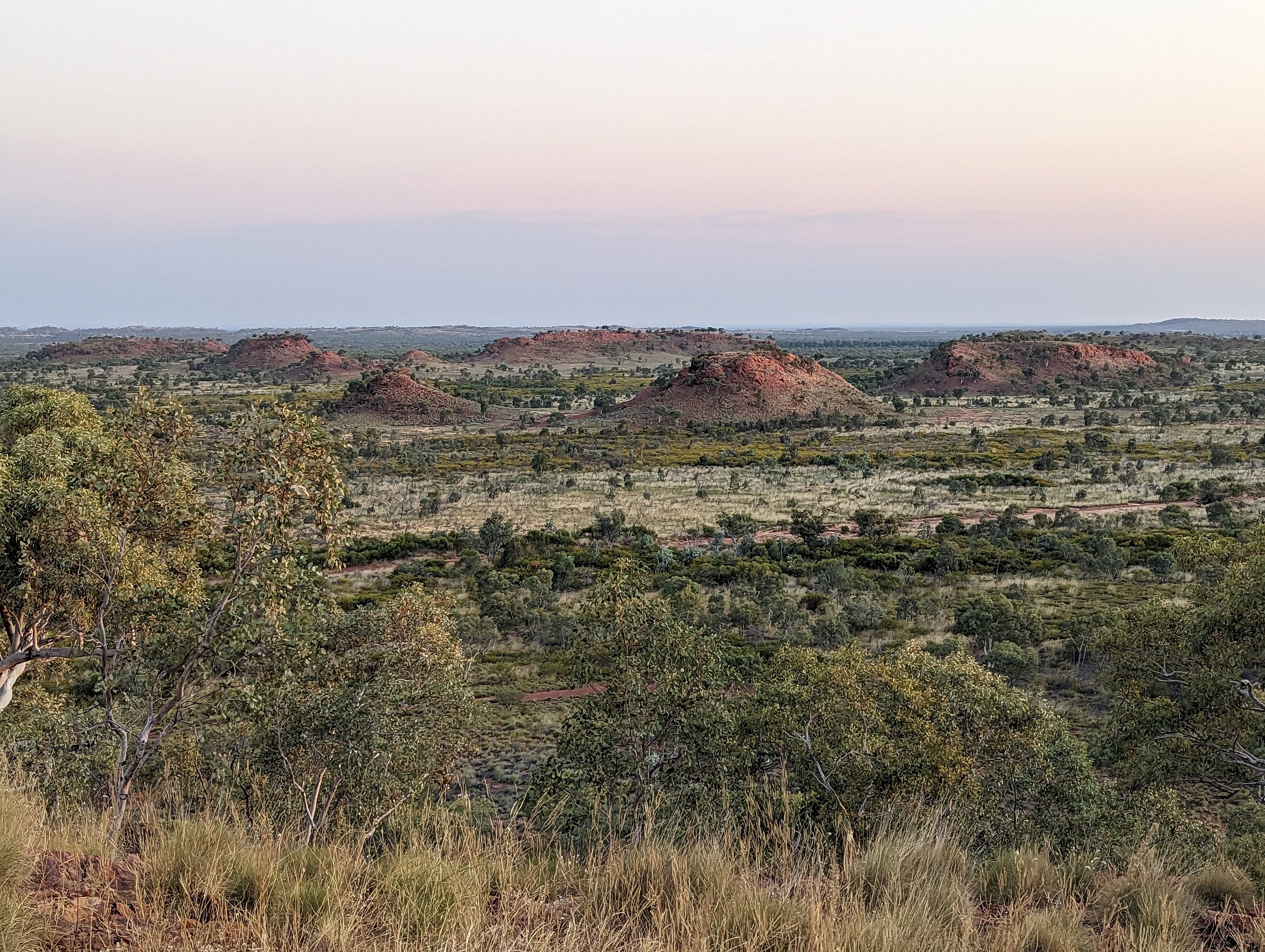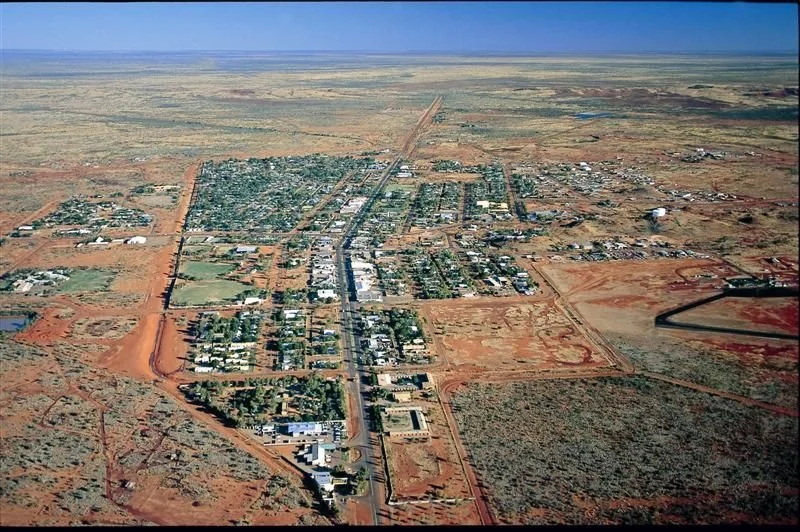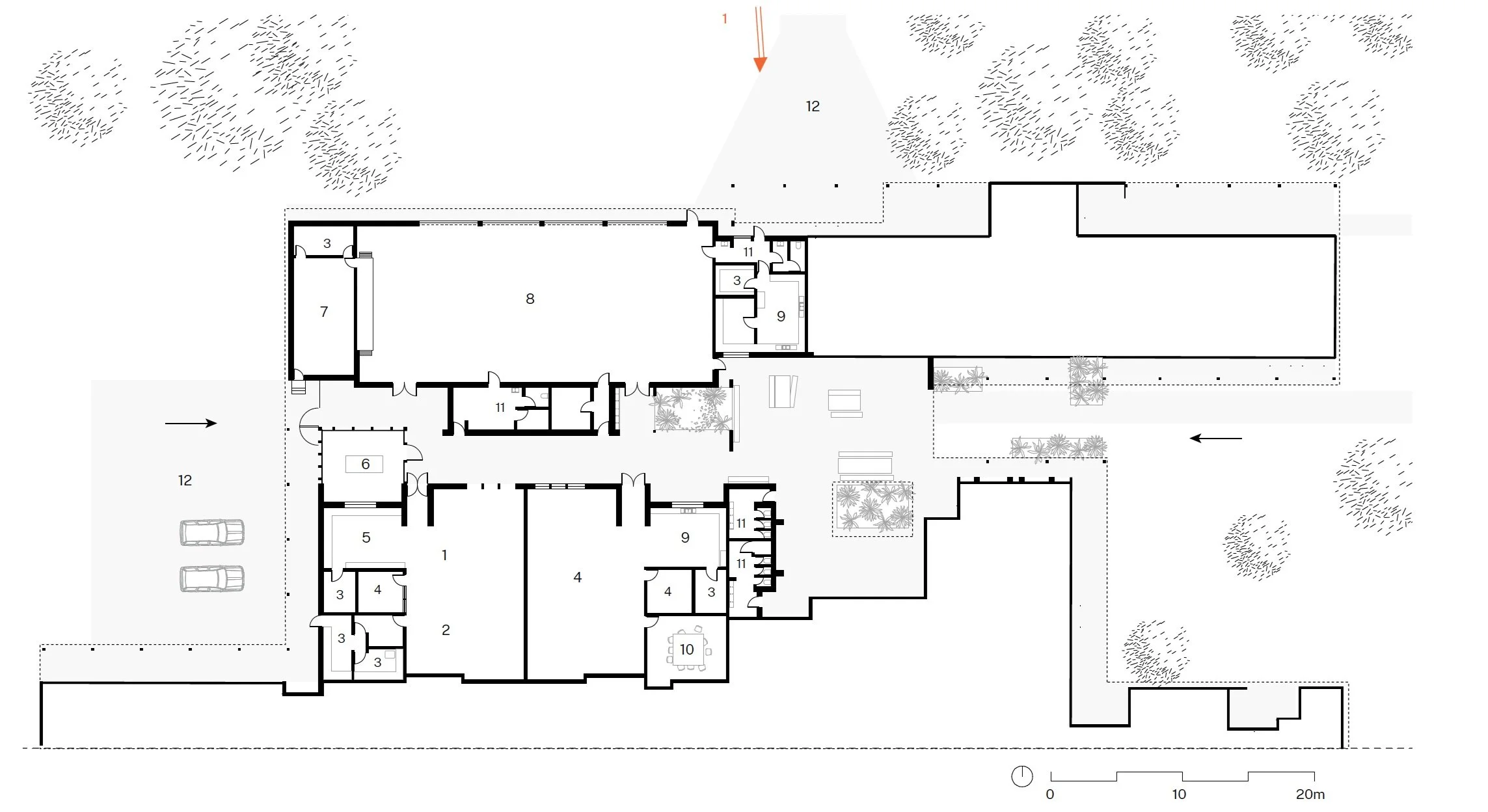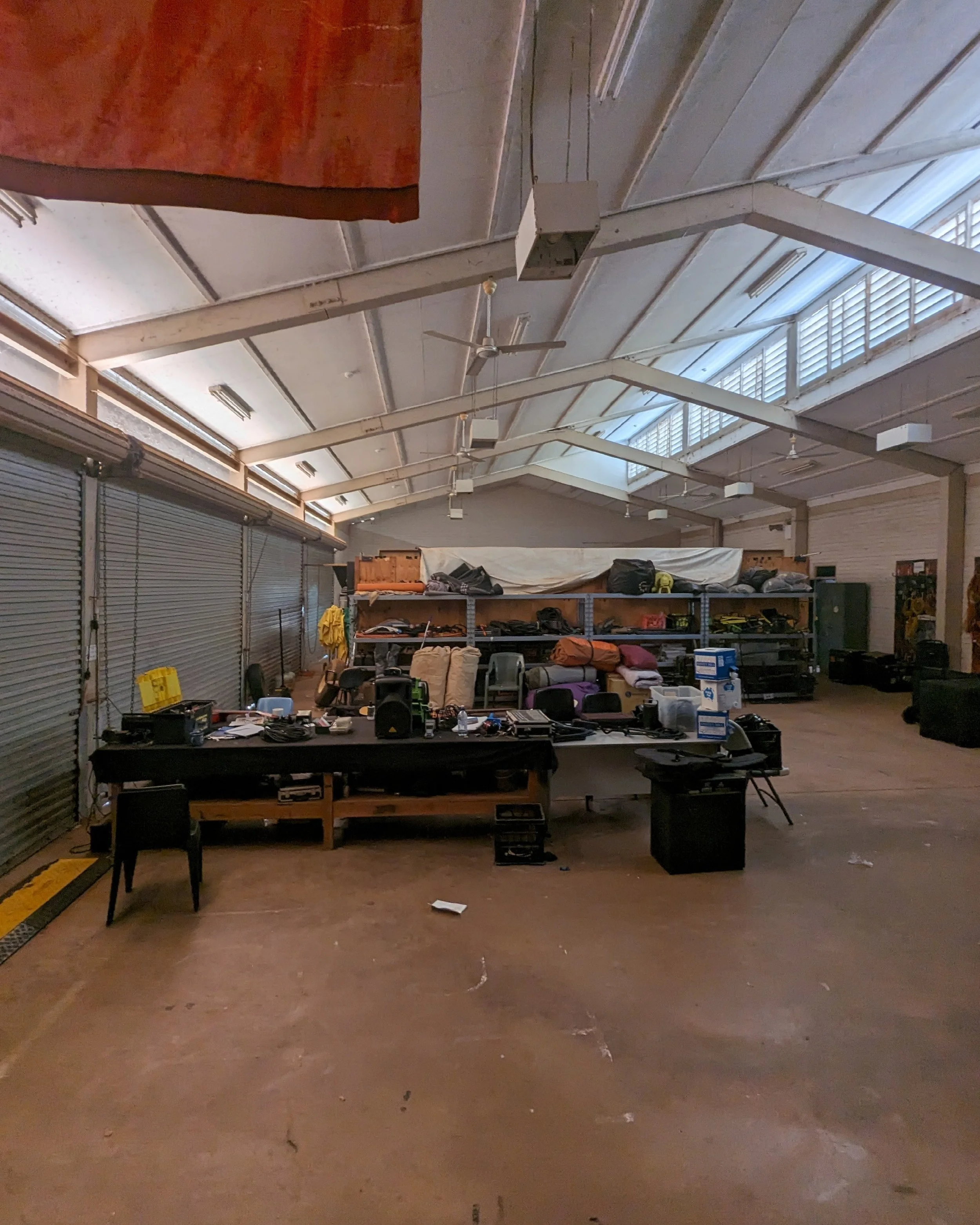
Case Study:
Barkly Regional Arts, Tennant Creek
The Barkly Region covers an area of around 322,700 square kilometres with 16 language groups. These include Waramungu, Warlpiri, Alyawarr, Kaytetye, Warlmanpa, Wakaya, Mudburra, Wambaya, Jingili, Kudanji, Ngarnga, Bingbinga, Garrawa, Yanyuwa, Waanyi and Mara. The region spans from the Roper Gulf in the north, east to the Queensland border, and the Central Desert in the south and south-west.
Barkly Regional Arts (BRA) was founded in 1996 as a networking and resource organisation for the communities comprising the sixteen language groups of the Barkly Region. From their Tennant Creek hub, the organisation does outreach to remote communities producing art, music and events that tell the stories of the Barkly. Their flagship event is the Desert Harmony Festival, held in Tennant Creek in July each year.
The Artists of the Barkly collective is a sub-set of the main organisation and represents over fifty Aboriginal artists living in five remote communities across the region: Tennant Creek, Wutunugurra (Epenarra), Owairtilla (Canteen Creek), and Kulumindini (Elliott), Mungkarta (McLaren Creek), with art centres of various scales in each.
The Artists of the Barkly use contemporary mediums to celebrate and preserve ancient cultures and languages. They primarily produce acrylic paintings on canvas, plus some pottery and weaving. The breadth and variety of work reflects the region’s cultural diversity, whilst shared elements of visual language illustrate the role of art centres in multi-generational knowledge-sharing. They also initiated and oversaw some street art projects in Tennant Creek.
Many of the artists I met had connections to Julalikari Arts which was established in 1994 in what was colloquially called the “Pink Palace” – a name derived from its pink painted concrete block construction. The Pink Palace was originally built as a hostel for stockmen and their families, by Mary Ward in the early 1970’s and became Mulga town camp. She bequeathed the building to the community and a group of women set up the Julalikari Council CDEP Women’s Art and Craft Centre. They placed a strong emphasis on training, employment, governance, children’s welfare, arts skills, administrative skills and business practice[1]. It was a meeting place for Aboriginal women to gather and paint traditional and contemporary artwork, with a child-care centre nearby.
Tennant Creek from the air looking south
https://www.australias.guide/nt/location/tennant-creek/

I stayed in Tennant Creek from 5 – 7 June 2023, visiting Barkly Arts Tennant Creek hub for the best part of a day as artists painted, staff worked, and visitors came and went. Kindly given a space in the office to write, I was able to get a sense of the different aspects of its operation from the visual arts to music and events as well. It is a busy enterprise, working across art forms with a small, dedicated team – I was impressed. BRA occupies a former school along with several other organizations, although I didn’t see many people around. A few artists worked in the studio, painting on the ground and chatting. Visitors dropped by who seemed to know the place and tourists passing through.
I had a car which was a rare treat on my travels and was able to explore the town that stretched either side of the highway, coming across some curious pyramid shaped buildings and some interesting examples of regional government architecture, plus a very good renal clinic designed by David Bridgman for the Architects Studio.
At the end of the day, I drove to the Battery Hill Gold Mining & Heritage Centre, now a tourist site with industrial remnants looking almost romantic in the dusk light. There was a lookout that afforded views over town in one directions and low hills and spotted with trees in the other. I was struck by the celebration of the extractive and colonial legacy in the town, that seemed to me to be at the expense of telling stories of the Warumungu people and the other Indigenous groups for whom it is now home - the Warlpiri, Alyawarr, Kaytetye Kaiditch, Luritja and Wambaya. I was heartened to see this changing with Nyinkka Nyunyu Cultural Centre and some great street art initiatives by BRA that were being painted while I was there.
I spent a further day in the small remote community of Wutunugurra / Epernerra, driving three hours with the Artists of Barkly artistic director. We set out across the beautiful landscape I had seen from the hill and the changed as we headed west, On arrival we did a lap of the community getting the word out that we had arrived ready for a busy day, collecting artists in the troopie and taking them to the arts centre. They were preparing for an exhibition at Coconut Studios in Darwin. There was a lot of artist chat about the upcoming trip and an Instagram post was created that turned one of the featured paintings 3D. An artist educator was also leading a workshop to paint flattened metal tins found around the community and some nice works were produced while I was there. A few weeks later I had the pleasure of lending a hand with the exhibition install in Darwin and attending the opening with the artists who had travelled north for the occasion.
One of the highlights of the day was watching an artist painting. The terrain and places I had seen and travelled over, came to life for me. Over the course of the day, she painted the landscape with the changing seasons. The painting transformed with time imbedded in its layers and I was given a glimpse of the extraordinary connection to Country.

Architecture
Barkly Regional Arts rents a series of spaces towards the rear of the former Karguru Primary School which was transferred to a TAFE facility in 1992 and is now operated by the Department of Education. Other tenants in the complex include Barkly Education, Charles Darwin University Office, Batchelor Institute and Top End Group Training. The building, which was built and opened in 1976, appears to be a standard Government Arid Area school.
Barkly Arts occupies about a quarter of the whole complex, in spaces located in two wings of the building with a central semi-outdoor spine between. To one side sits the art studio and gallery in one space and the BRA offices in another. They are both within low-ceilinged spaces with a window into the semi-enclosed corridor with no direct light. The ceiling is a novel design that distributes light evenly across the space. There is an art prep room and workshop that were facilities formerly used by Bachelor College. To the other side of the corridor is the music and events spaces – within a larger shed space that looks like it may have been the sports and assembly hall. At one end they have created a recording studio, in what looks like the backstage area. The hall has a sawtooth roof that allows light in and has roller shutters that open out to a large yard which is where they host the Desert Harmony Festival.
The street frontage to the complex has an institutional appearance and the entrance to Barkly Regional Arts – both offices and gallery – is through an outdoor, semi-enclosed passage. Because of the direction I drove to approach the site, I took an earlier turnoff following a sign that led me around the back of the building to a carpark that gave more direct access to Barkly Arts.
The main entrance to the Karguru Centre that houses various entities including the Department of Education, Charles Darwin University Office and Batchelor Institute. Barkly Regional Arts is located in a series of spaces towards the back of the complex, accessed via a central semi-outdoor passage.
Aerial view of the site - the plan is a portion of the overall building.
1.Artist studio
2. Gallery and retail
3. Storage
4. Offices
5. Art prep room
6. Workshop
7. Recording studio
8. Event space
9. Catering kitchen
10. Meeting room
11. Bathrooms
12. Carparks
View #1 on plan, looking at the side of the building used for loading and servicing and including the site used for the Desert Harmony Festival.
The artist studio and gallery is located in a former classroom plus makes use of an old art workshop. The external light-wells have been covered in which means that there is no natural daylight in either the semi-outdoor circulation spaces nor into the former classrooms that now serve as the art centres studio, gallery and administration spaces.
There is a change in floor surface that helps to define the studio and gallery, that is usefully blurred by artists sitting on round floor mats to create a hybrid space. The innovative ceiling lighting provides even illumination throughout the space.
The former sports assembly hall provides a large versatile space for BRA, primarily utilised by the music and events team. It stores music equipment and gear for camping and going bush. With its high ceiling, steel trusses and sawtooth roof letting light in, it was a pleasant space to be in. The roller shutter doors running the length of the space allow vehicle and loading access plus open to the outdoor space that hosts the Desert Harmony Festival.
Wutunugurra is the traditional land of the Alyawarr people. It is located southeast of Tennant Creek, on the western side of the Frew River on a Community Living Area within the Epenarra pastoral station. An art centre was established there c. 2008 in a caravan known as the “silver bullet”, it then moved to a demountable originally set up by World Vision Australia. An extension was built onto the demountable which opened in 2021. The demountable has two rooms, one with a kitchenette the other a bathroom, and is raised on brick piers above the ground. A simple concrete block space is attached. An internal disabled ramp allows access to the bathroom. There is no roof overhang to speak of and windows are standard issue with security grills without any shading. A paint sink is located outside.
The size of the structure is adequate and the painting of one wall of the demountable by the artists makes the interior bright and more pleasant. Airconditioning made the space comfortable to be in to work.
Moveable tables and matts provide spaces to work in the open space, although there is no ability for gender segregation or to work under cover outside. The disabled ramp runs the length of the space (right of interior photograph) leading to the toilet through the orange door. There is no roof overhang for shading or protection in the wet season. Domestic scale sliding doors open into the dirt and prove hard to roll.














